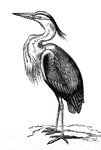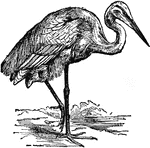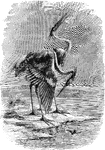Clipart tagged: ‘Ardea’

Heron
These wading birds mostly spend their time wading about in shallow water, feeding upon small fishes,…

Heron
"Heron is the common name of birds of the genus Ardea. The herons are distinguished by having a long…

Heron
"Ardea. Great Herons. Of largest size, former well feathered all around. Tibia extensively denuded below.…